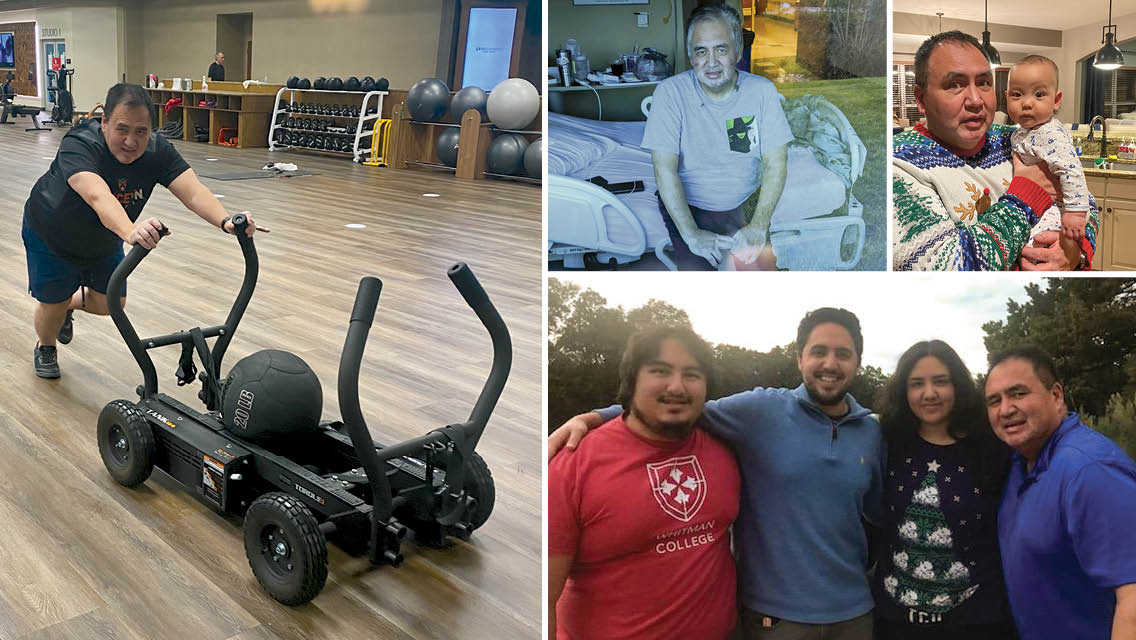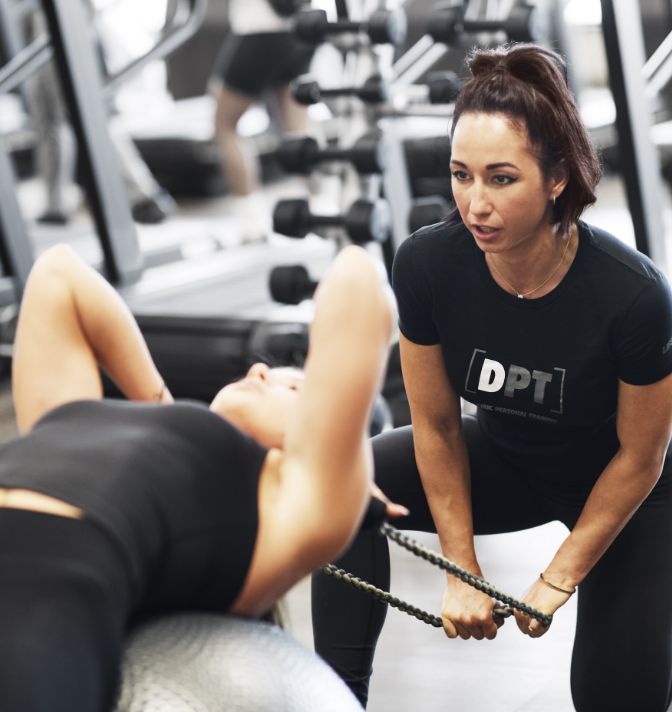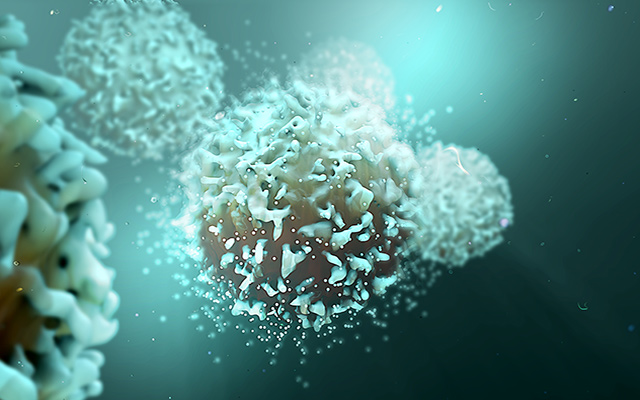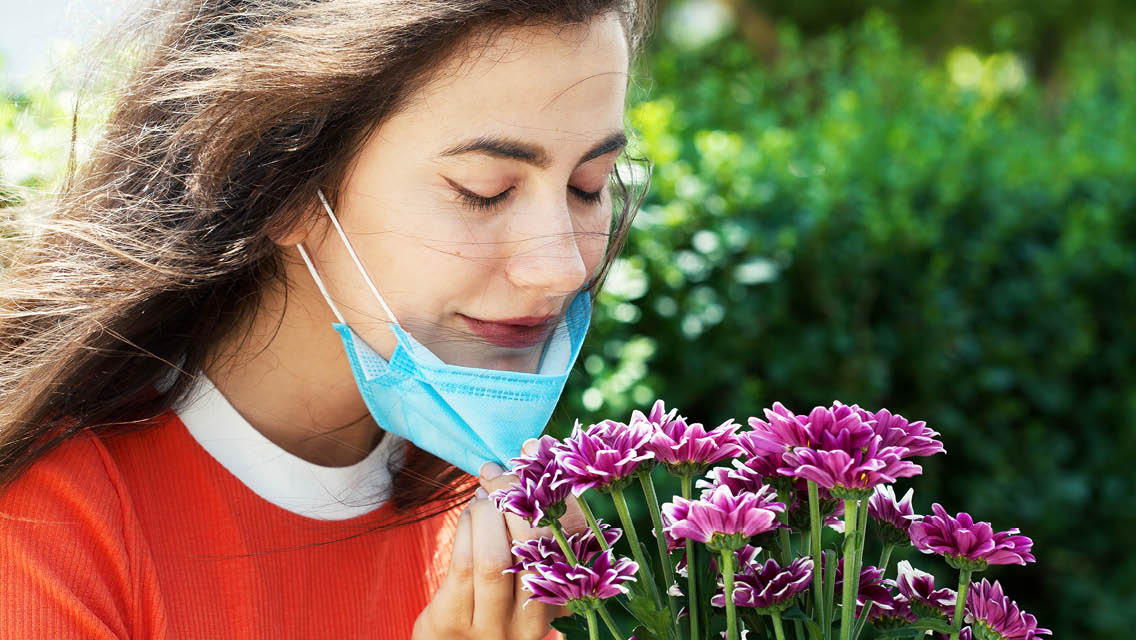In early March 2020, I came down with what I thought was a bad cold. Although it lingered, I started feeling better. I couldn’t smell or taste anything, but at the time we didn’t realize what that was about.
On March 6, I took my youngest daughter to New York City to see some Broadway musicals. As we were waiting for the opening of Moulin Rouge, she said, “Dad, your hands look weird” — and they did. They were discolored, something we later recognized with COVID-19 patients.
We left New York on March 11, the night before Broadway shut down. I returned home to St. Louis and continued to grunt through my shifts as an emergency-room physician until March 17. At about 3 o’clock in the morning I stood up and tried to walk across the bedroom. My heart was pounding. I was struggling to breathe.
My daughter, who somehow avoided contracting the virus, took me to the ER right away. My oxygen was 81 percent (it should be 95 to 100 percent). When I saw my chest x-ray, I knew I had COVID.
Despite dialing up the supplemental oxygen to a high flow, I continued to decline. I was getting delirious and knew I was in trouble. I called the intensivist myself: “I think I need to be intubated,” I said — and he agreed.
This was so early in the pandemic that I didn’t get remdesivir or plasma. Instead, I got a high dose of steroids and a ventilator. I knew firsthand that patients who spent more than seven days on a ventilator typically died, and mortality rates for ICU patients were horrible.
After 22 days on a ventilator in an induced coma, I woke up and felt like E.T. in the scene where he’s sick and surrounded by people in full HAZMAT gear — and there was no phoning home. I was 58 years old and a single dad to four grown kids — my oldest, 30, was a medical resident; my youngest, 21, was in college. I wasn’t ready to die.
Caught by COVID
I worked in the ER at the same hospital in St. Louis where I was a patient. I think the pandemic started a lot earlier than we realize. At the end of February 2020, I’d begun treating people who had coughs and fevers but tested negative for flu.
At the time, we wore masks for respiratory disease, but we didn’t mask for patients who came in, say, with an ankle injury. We didn’t do PPE for everyone like we do now.
Three days after I was extubated, I was delirious from the high-dose medication that had put me in a coma. I began to feel sick to my stomach, so I pressed the call button. I waited, but nobody came.
ICUs have terrible lighting — I didn’t have a concept of night or day — and the system the hospital had quickly assembled to improve ventilation for COVID protocol made the rooms incredibly cold.
To limit exposure, nurses were allowed only 45 minutes with a patient on their entire shift. When they did come into a COVID room, they first had to put on all the protective gear. I called for a nurse again, but they were busy with patients sicker than me.
The nausea got worse, but I was so weak, I knew I would fall if I tried to make it to the bathroom without assistance. I threw up all over myself. I hit the call button again and waited.
As I lay there covered in vomit, I felt like a complete invalid. I began to understand why people who are terminally ill say they just want to die.
Right then, I knew I couldn’t live like that, but I didn’t want to die. I wanted to do whatever it took to make myself stronger.
Rehab and Recovery
Miraculously, I survived. After I was discharged from the hospital, I spent 10 days in rehab. Only certain facilities would take COVID patients; people were afraid of us.
I was released from rehab on May 1, went home, and began intense physical therapy. I really concentrated on my recovery. I was so weak I felt like I was going to die with every step. My heart rate would jump to 160 when I got up to go to the bathroom. I relied on an oxygen tank if I was up and moving during the first three weeks.
My recovery progressed slowly throughout the month as I graduated from needing portable oxygen.
Stress is part of the job as an ER doctor, so, prior to getting COVID, I took extra measures to counter that stress by working out three times a week at Life Time, including with a personal trainer once a week. That’s what I’ve been doing the last 10 years, because the personal trainer keeps me honest.
I eat healthy, take lots of walks, and enjoy time with my kids. I was healthy and happy and assumed that’s the way I would go on living.
When I returned to work in June, I reached out to my personal trainer, Dominic Mena. If I could work, I figured I needed to get back to weekly training sessions and the routine I’d known before I got sick. I was lucky I had someone who was already familiar with my previous fitness level and understood I wasn’t at 100 percent.
I had to be careful. We worked on my core and rebuilding muscle mass. In the hospital I had been put in the prone position and didn’t move for 22 days. Plus, I didn’t tolerate my tube feeds. I lost about 50 pounds, and the lost muscle made my arms and legs wobbly.
I worked out with a pulse oximeter, and if I got below 90, I would have to slow down. Even though I didn’t have signs of long-haul COVID, I feel like I have a little PTSD. If I was working out and felt breathless, I would get scared. Then I’d look around and realize we were all working out and breathing hard.
By September we began to add more aerobic training. Dominic eventually helped me get to the point where I was lifting more weight and doing more cardio than I had before. He carried a tablet around and showed me my progress. We just kept pushing.
Breathing Again
The moment I realized I was back happened early in November 2020, when I went to visit my best friend from medical school in San Diego. We had walked downhill to the beach. But when we turned to go back up the hill, I worried I might not make it. I didn’t want to humiliate myself by asking him to get the car.
But I did make it. That three-mile walk was a symbolic moment. I realized I had regained my respiratory capacity.
I was there for five days, and every day I walked to the beach. Every time felt like a celebration: I could finally take a deep breath. My lungs felt like they used to. That’s when I knew I was going to be OK.
I’ve become even more intentional about being healthy. I prioritize leafy greens and lean protein. At work, I’m more careful about protecting myself. Even though I know I have antibodies, I got the vaccine — I never want to go through something like that again.
Having COVID also made me more empathic with patients because now I know what it’s like to be in the ICU. I’ve taken life and upped my game. Being a survivor influences the way I work and live now.
Larry’s Top 3 Success Strategies
- Persevere. Especially while recovering, you’re going to have days when you don’t progress and feel like you’re going backward, Larry says. “There will be disappointing days. It’s not easy, but you have to keep going.”
- It’s OK to be angry. Larry doesn’t believe in pity parties, but he found that anger can be a great motivator. “You have to channel that,” he explains. “Any successful person takes their misfortune, learns and builds on it, and moves on.”
- Choose optimism. Larry always aims to see the glass as half full rather than half empty. “Think of what you have and not what you don’t have,” he advises. At each step of his recovery, he had to look at what he could still do instead of what he had lost.
Tell Us Your Story! Have a transformational healthy-living tale of your own? Share it with us!
This article originally appeared as “Deep Breaths” in the November 2021 issue of Experience Life.






This Post Has 0 Comments